In the treatment of ophthalmic pathologies, surgery in the eyes is considered to be the most effective way.Thanks to modernized medical technologies, eye surgery is performed very quickly.They cause virtually no damage to the eyeball, but sometimes unforeseen complications can occur.As each operation has its own contraindications, the type of surgery is selected individually, depending on the type of disease.To reduce the risks of unsuccessful results after therapy, doctors recommend that you take all the necessary tests.
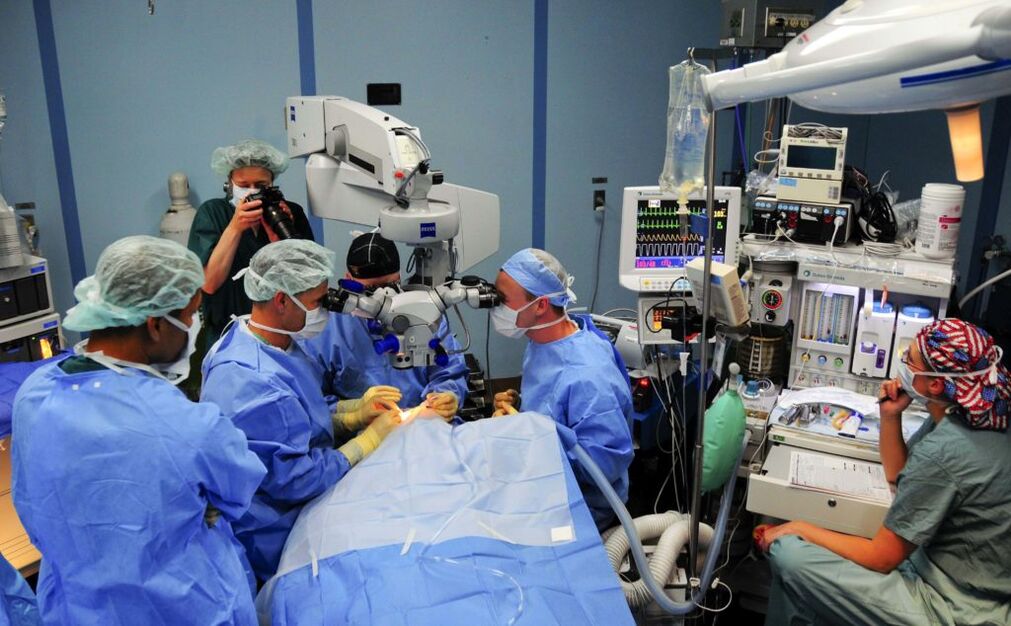
Testification
The procedure is prescribed after a thorough visual inspection and all the necessary diagnostic procedures.Therefore, any surgery is a risk before consulting the surgery, the doctor will try conservative methods of treatment with the help of drug therapy.Surgery is only prescribed if the medicines do not produce the desired results.Indications for surgery:
- eye dystrophy;
- Formation of Belm of the cornea;
- keratoconus;
- traumatic damage to the visual organ;
- keratoglobus;
- Serious pathological changes in the organ.
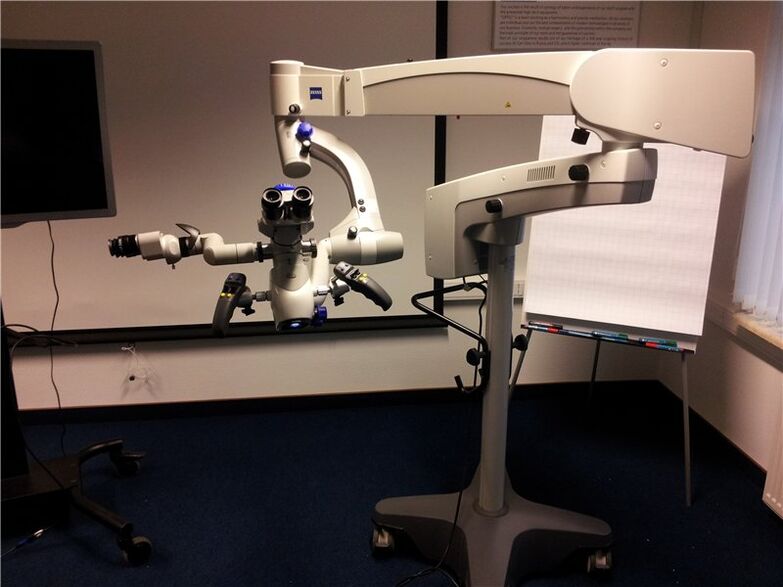
Species and behavior
Before surgery, it is necessary to undergo diagnostics, the doctor will express the list of consultation tests.Vision adjustment methods are selected individually by each patient, they can be recommended to the patient with cataracts, myopia, strabismus, halazion, glaucoma and other dangerous deviations.During manipulations, ophthalmologists use modern medical equipment, the intervention is performed with the help of a microscope, vision is regulated by very small incisions.Because surgery is simple and low -traumatic, long -term hospitalization is not required.After 2-3 hours, the doctor explains to the patient all the nuances of the recovery period, how to care for the eye and go home.The hospital is recommended only for serious pathologies (retinal detachment, severe inflammation, penetrating wounds).There are such types of operations:
- laser surgery;
- Vittectomy;
- Trabeculectomy;
- LTP, lie;
- Focoemulsification;
- scleroplasty;
- keratoplasty;
- Enucleation of the eye;
- Refractive replacement of the lens;
- Crossing;
- Anthacomatous surgery.
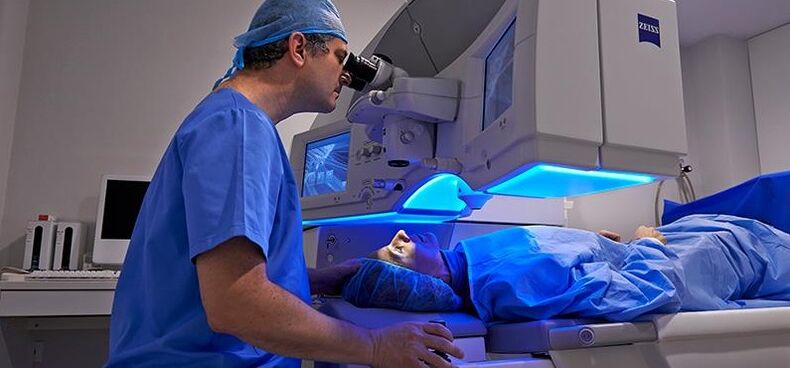
Correction of laser vision
Do the operation for damage and tears of the retina.The patient must undergo a thorough examination before agreeing.Drops that extend the pupil drip before the intervention.With the help of a laser, the eyes are made from microsurgery (Weat weak areas of the tissues are soldered), this prevents the penetration of fluid and subsequently detached.The laser retinal coagulation is simple, it takes a few minutes in time, even the children tolerate it well.
The operation is performed under local anesthesia.During the patient's recovery period, it is recommended to abandon active sports, bad habits and physical overload.The negative effects of laser vision adjustment can occur within 3 hours - this is an increased secretion of tears, photophobia, redness, discomfort and rubbing in the eye.Doctors do not recommend this procedure under 18 years of age.The percentage of vision restoration after laser correction is very high.
Keratoplasty
With irreversible pathological changes in the eye, the Okulists recommend this procedure.The surgery to restore vision and eyes after injury consists in the complete removal of pathologically altered corneal tissues, which are then replaced by a donor.There can be many causes of surgery - it is keratoconus, severe damage to the tissues of the eyeball, EED, ulcerative changes caused by fungal infections and genetic predisposition.Local anesthesia is used in surgery.Using the tools, the doctor should remove the inflamed cornea and replace it with a healthy one, then the seams are applied.It takes about 2 hours.The recovery period is 1 year.Eyes are recommended to protect with glasses, this will prevent organ injury, complications after surgery.
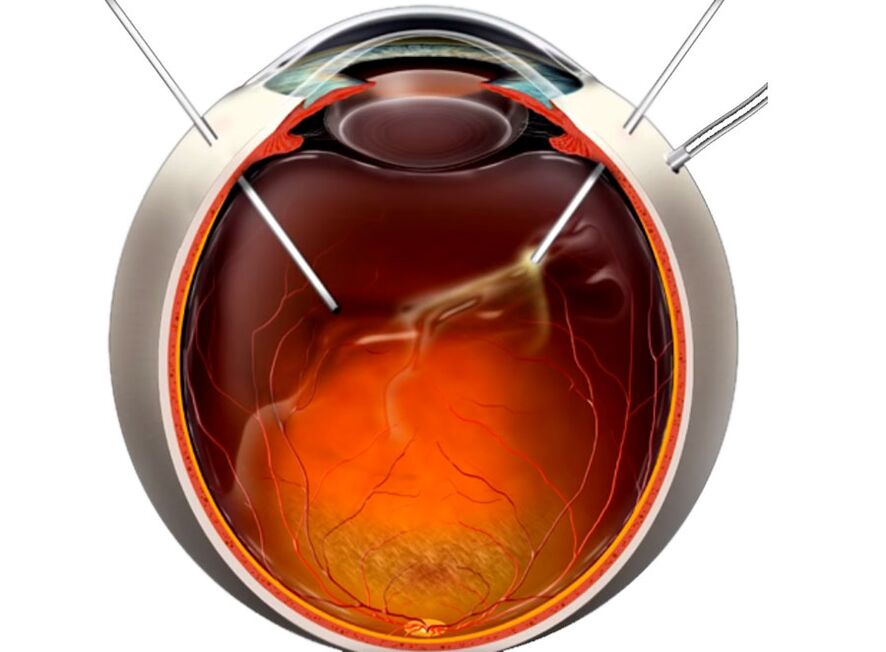
Victomy
Make vision adjustment with pathologically altered retinal vessels and when removed.Thanks to the professional manipulations, the doctor will gain access to the back of the eye.After removal, the vitreous body is replaced by donor material.A solution of saline, silicone oil, polymers and perfactor compounds is used as a special liquid.In ophthalmology, vitrectomy is considered to be a microvasic methodology, the intervention in the visual organ system is minimal, which contributes to the patient's return to the patient.With the help of this method, it is possible to restore the structure of the retina to prevent the development of pathologies, whose names are adhesion and retinopathy.
As the air is filled with many dust particles to prevent infection after organ correction, it is necessary to tightly glue the controlled eye with a bandage for some time.
Anti -stitches
Eye surgery should be used if treatment with drugs is unauthorized and only after a comprehensive examination.This type of intervention does not cause pain, it is done quickly, it is usually prescribed for the treatment of closed and open glaucoma and when the vessels germinate inside the eyes.The essence of the procedure is to eliminate the accumulated fluid inside the organ, it is carried out by a laser.The most effective methodology is considered to be an unsuccessful deep scleretomy.In the process of therapy, the horny layer is surgically interpreted, thus reducing increased intraocular pressure.Possible consequences of surgery of this type can be expressed in the formation of scars, initially the eyes can be red.
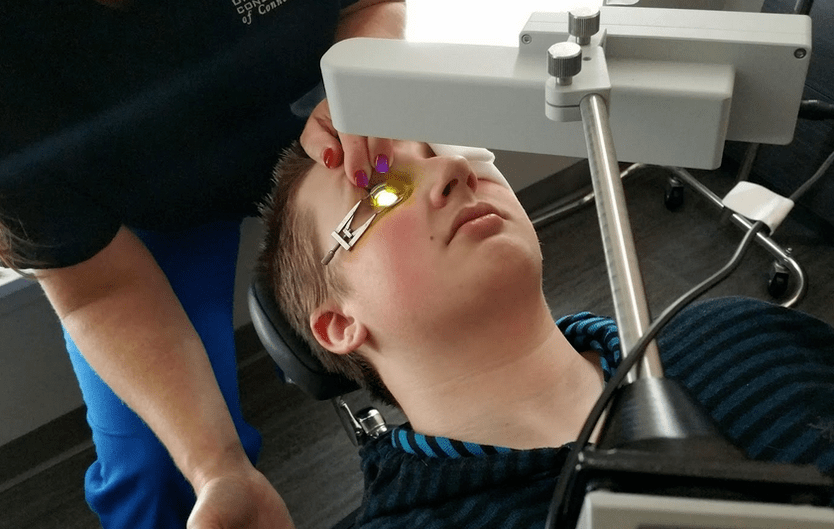
Crossing
Quite a new method of treating keratoconus using it can prevent the disease from developing in the initial stages.Using an instrument whose name is a boring lamp and drip vitamin B in the nest of the eyes2, It is possible to strengthen the cornea and stabilize the patient's condition.The plus of the procedure is that the manipulation is performed only once, 1 hour is sufficient to perform it.After reducing the risk of injury, a special protective lens is placed on the eyeball.
Enucleation of the eye
This is a complex surgery, it is prescribed only in extreme cases if the organ cannot be preserved differently.The eyes are completely removed from the nest of the eyes, and the prosthesis of the fiberglass is implanted in its place, it will look real.Side effects can develop, these are unforeseen inflammatory processes and displacement of the implant.Certificates include such pathologies as:
- glaucoma to terminal degree;
- the onset of pain and the development of inflammation in the blind organ;
- Serious injuries and neoplasms.
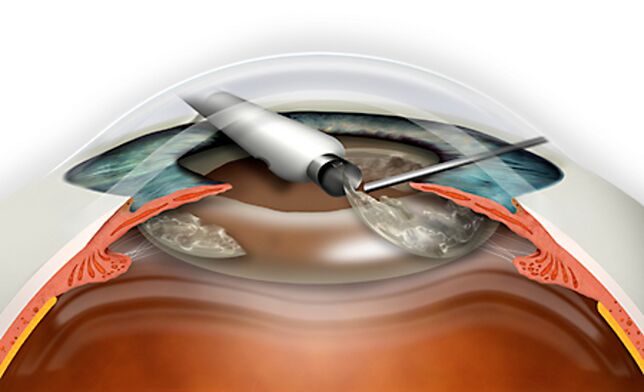
Refractional replacement of lens
During the operation, the damaged element of the visual system with an artificial system appears.When choosing an intraocular lens, the individual characteristics of the patient (age, gender) are taken into account.The procedure lasts for 25 minutes, local anesthesia is used, surgical procedures are performed without blood.Through microdnaras, using ultrasound, the lens becomes an emulsion and is removed from the eye.Refraction is done with pathologies such as:
- performance of myopia and hyperopia;
- Presbiopia;
- Prohibition of laser correction;
- High hyperopia that can cause glaucoma;
- Disruption of refraction and rapid loss of visual function.
Vision Correction Eximerlazer
Surgical intervention is recommended for eye pathologies such as strabismus, astigmatism, farsightedness.There are several ways to implement, this is Femo Lasik, the Federal Republic of Criminal Code, Lasik.The doctor cuts the top layer of the cornea, its curvature changes with the help of a cold beam of an excessive laser, it is better to use local anesthesia and mediocre.After correction of Eximerlazer, the patient gets rid of the problem as the procedure is effective with 99%, in the plus of other interventions.The unsuccessful surgery leads to hyper -correction, causes redness, and the corneal layer looks inflamed.
Strabismus
Eye surgery for strabismus is aimed at correcting the symmetrical position of the organ.Surgery is divided into two types: it is an increase in the muscles that are responsible for the movement of the visual organ and relief in the oculomotor muscle.In the first case, part of the muscular system, as well as anti -position and tenoria, is resembles, in the second they change the site of muscle attachment, lengthening it by plasticity.What method to turn to, the surgeon solves, given the individual factors and the severity of the pathology.
Scleroplasty
Doctors recommend that you refer to this type of intervention with uncontrolled development of myopia.Using the methodology, strengthen and stabilize the patient's condition, stop the loss of vision.Scleroplasty is shown to children and adolescents at the age of 17 during the active growth period, such as such pathologies of the eye as rapidly developing myopia.
After removing the eye in the first days, the patient may feel severe pain, in which case you should consult your doctor and choose the right analgesics.
Removing formations
Surgical intervention of this type is shown for halazius, cystic neoplasms of conjunctiva and pterngia.Holding growth with tweezers, the doctor cuts it further to eliminate the negative effects, the wound is climbing.To prevent the infection, antibiotic ointment is applied to the eyelids and a sterile dressing is used.The disadvantage is that the disease can develop again, in which case the return to this method of therapy cannot be avoided.
Eliminate cataracts
During the microsurgery, a pathologically altered lens is removed, the therapy is performed with the help of laser and ultrasound phacoemulsification.Special surgical instruments through micronades are thinned and removed from the eye, replaced by artificial.Sometimes they do a procedure called intracapsular and extracpsular extraction.




















